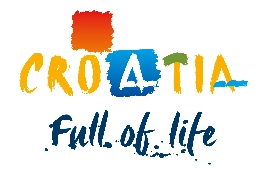
en


Accessibility tools
Large text
Invert color
Black & white
Letter spacing
Line spacing
Large cursor
Reset tools

Add to My Journey

Share
Wellness & sea
NW Istria
Protected Istrian sea bivalves
If you dive into the depths of Istria’s undersea world, you might find one of its protected species of bivalves attached to a rock or buried in the sand. Most of these protected bivalves are relatively easy to catch by hand. Some are appealing because of their delicious meat, others because of the beauty of their shells. In order to act appropriately and contribute to environmental protection, before you dive, learn which shellfish you are not allowed to catch or eat in restaurants.
Meet Istria’s 7 protected species of bivalve
Noble pen shell (Pinna nobilis)
Famous for its beautiful, light brown shell in the shape of a long fan, the noble pen shell is the largest bivalve in the Mediterranean, able to grow up to 120cm. It lives on sandy and silty sea bottoms at a depth of 2 to 30m. Every hour, it processes up to 6 litres of sea water, filtering out the phytoplankton it uses as a main food source.
Fan mussel (Atrina fragilis)
It lives at depths below 25m, half-buried in the sea floor substrate. It is thinner, wider, and has a relatively smooth shell in comparison to the noble pen shell. It grows to a length of 40cm, and it is the second largest shellfish in the Adriatic.
Date shell (Lithophaga lithophaga)
The delicious meat of the date shell makes it one of the most highly valued shellfish in the Adriatic. They can only be found by breaking the underwater rocks in which they grow. That is why the hunting of this shellfish is strictly prohibited. It has a cylindrical shape similar to that of a date (hence the name). The date shell can grow to a length of up to 12cm, and it can live as long as 80 years.
Zoned miter (Mitra zonata)
This exceptionally beautiful, rare snail lives in silty or coral sea bottoms at depths greater than 20m. It has an exceptional, long, light brown spindle-shaped shell with a dark rim. It can grow to a length of around 10cm.
Common piddock (Pholas dactylus)
The common piddock is the only member of the piddock family found in the Mediterranean. It lives in sea rocks or wood, into which it digs long corridors with its serrated shell. It can grow up to 12cm in length. This species is especially fascinating as it oozes a bioluminescent compound known as luciferin.
Brown cowry (Luria lurida)
The brown cowry is a rare sea snail with an exceptionally beautiful shell. Its egg-shaped shell has a smooth, porcelain-like surface. It lives on solid substrate at depths of more than 20m. It can grow up to 6cm in length.
Giant tun (Tonna galea)
This snail’s shell is barrel-shaped, thin, and relatively fragile. It lives near the coast on soft, sandy or silty bottoms at depths from 10 to 150m. It can grow up to 30cm and weigh up to 1.5kg. It is one of the largest sea snails in the Adriatic.
Tags:
#Adriatic sea

Subscribe to our newsletter
Keep up with the news

In all colours of Northwest Istria

Follow us
Additional Information


©2024 Colours of Istria. All rights reserved. No part of this site may be reproduced without our written permission.



©2024 Colours of Istria. All rights reserved. No part of this site may be reproduced without our written permission.
















